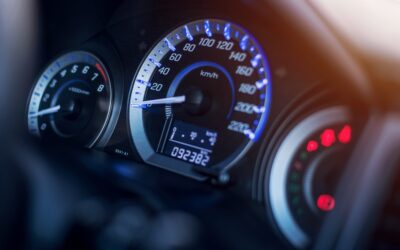An MOT (Ministry of Transport) test is an annual check of the general safety and road worthiness of a vehicle. By law, all qualifying vehicles must have a current and valid MOT. If your car does not have an MOT, it must be SORN (Statutory Off Road Notification) to confirm that the car is officially not being driven or kept on the road.

An MOT is a visual inspection of a vehicle, so you need to remove anything obscuring any of the essential checks.
While an MOT will give you an indication of the state of your vehicle, it is not a replacement for performing regular checks and maintenance, especially if you notice something doesn’t look, sound or feel right. If you are driving a defective vehicle, as well as placing yourself and others in danger, it’s likely that your car insurance will be invalid in the event of an accident.
What is checked on an MOT?
Steering and suspension
A series of checks to the steering and suspension are performed inside and underneath the vehicle, and under the bonnet.
- Inside the car
The condition of the steering wheel itself and whether it is securely attached to the steering column will be checked. - Underneath the car
The condition of your suspension and shock absorbers will be inspected. - Under the bonnet
The steering rack or box will be inspected.
Throughout the vehicle, the assessor will be on the lookout for things such as leaks, broken or missing components, and excessive movement.
The windscreen and mirrors
A number of checks will be made on the windscreen and mirrors to make sure the view of the driver isn’t obstructed in any way.
- Mirrors
The mirrors must be secure and give a clear, unobstructed view to the rear and the sides. - Windscreen
The windscreen itself must not have any obstruction or damage to the glass larger than 10mm directly in front of the driver and 40mm in the larger swept area. - Windscreen washers & wipers
The washers and wipers must clear a large enough area for the driver to have a good view of the road. There must be sufficient amounts of screenwash and the wiper blades must be in good condition. Check your screenwash levels and wiper blade conditions before putting your car in for its MOT, as these are easy top up and replace yourself, and you will save money by not having to pay a mechanic to do it.
Fuel, emissions and exhaust
There are four main areas that will be checked in regard to fuel, emissions and the exhaust of your vehicle.
- Exhaust system
The entire exhaust system will be checked comprehensively to ensure that it is secure and doesn’t have any leaks. - Catalytic converter (if present)
If the vehicle was manufactured with a catalytic converter, this must be present and functioning. - Tank cap
The tank cap to the fuel system must be a good fit and the whole system itself checked over for leaks. - Emissions
For the emissions, a gas analyser probe will be used while the engine is running. This checks that there are legal amounts of hydrocarbons and carbon monoxide being emitted. If there is dense blue or black smoke than this can be a cause of MOT failure.
General check of the structure of the car
As well as the chassis, body, seats, doors and engine mountings of the vehicle. It will also check:
- Seatbelts
Will check that the seatbelts are secure and in good condition. - Vehicle Identification Number (VIN)
The VIN (Vehicle Identification Number) is clearly displayed. This can either be etched or stamped on the chassis or body or a VIN plate can be secured. - Warning lights
All warning lights will be checked to see if they are fully operational. - Brakes and pedals
The brake performance will be assessed, as well as an overall check of the condition of the levers, pedals and brakes.
Registration plates
These must be fitted front and rear, be clearly legible and secure. The characters should be correctly spaced and formed.
Wheels
The wheels will be checked against numerous criteria.
- Condition
The wheels themselves should be in good condition. - Tyres
They must be in good condition have the relevant load and speed rating for the vehicle, the tread must be a minimum of 1.6mm and have no structural defects such as rips or bulges.
Lights and signals
Some number of MOT failures occur due to light or signalling problems. The correct operation for all lights and signals on the car is imperative for maximum safety. The front, brake, rear, indicator, fog, registration plate lights and rear reflectors must all be:
- Secure and correctly positioned
- In good working condition
- Free from obstruction
- Displaying the correct colour
- Be illuminated by a single switch
If lights are operated in pairs then they must be identical. The horn, battery and electrical wiring will all be checked to make sure that they are fully functional.
If one of your lights is out, you will probably have noticed, however, give them an extra check before your MOT. In most cars, replacing a bulb is an easy job to do yourself, which will save you money.
This list of what is checked on an MOT may seem like a very in-depth testing system, but if your car is exhibiting some of these faults the chances are that you will have noticed already and dealt with the problem. Simple maintenance to your vehicle can prevent around half the faults found during MOTs. Good maintenance and regular checks during the year will give your vehicle the best chance of passing its MOT first time.



